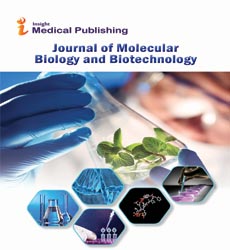Genetic Control of Cell Growth: Opinion Article
Valerie Smitha*
Department of Molecular Biology, Harvard University, USA
- *Corresponding Author:
- Valerie Smitha
Department of Molecular Biology,
Harvard University,
USA,
E-mail: vjs1@st-andrews.ac.e
Received Date: September 1, 2021;Accepted Date: September 15, 2021; Published Date: September 22, 2021
Citation: Smith V (2021) Genetic Control of Cell Growth Laboratory. J Mol Biol Biotech. Vol. 6 No.5:005.
Description
Cells can develop by expanding the general pace of cell biosynthesis to such an extent that creation of biomolecules surpasses the general pace of cell corruption of biomolecules through the proteasome, lysosome or autophagy. Biosynthesis of biomolecules is started by articulation of qualities which encode RNAs or potentially proteins, including catalysts that catalyze amalgamation of lipids and sugars. Individual ascribes are everything saw as given through record into dispatch RNA (mRNA) and interpretation into proteins, and the declaration of every quality happens to different various levels in a cell-type explicit style (because of quality administrative organizations).
To drive cell development, the worldwide pace of quality articulation can be expanded by improving the general pace of record by RNA polymerase II (for dynamic qualities) or the general pace of mRNA interpretation into protein by expanding the wealth of ribosomes and tRNA, whose biogenesis relies upon RNA polymerase I and RNA polymerase III. The Myc record factor is an illustration of an administrative protein that can actuate the general action of RNA polymerase I, RNA polymerase II and RNA polymerase III to drive worldwide record and interpretation and in this way cell development. Moreover, the movement of individual ribosomes can be expanded to help the worldwide productivity of mRNA interpretation through guideline of interpretation commencement factors, including the 'translational lengthening inception factor 4E' (eIF4E) complex, which ties to and covers the 5' inish of mRNAs. The protein TOR, part of the TORC1 complex, is a signi icant upstream controller of interpretation commencement just as ribosome biogenesis. TOR is a serine/threonine kinase that can straight orwardly phosphorylate and inactivate an overall inhibitor of eIF4E, named 4E-restricting protein (4E-BP), to advance interpretation effectiveness. Pinnacle additionally straight orwardly phosphorylates and actuates the ribosomal protein S6-kinase (S6K), which advances ribosome biogenesis. To hinder cell development, the worldwide pace of quality articulation can be diminished or the worldwide pace of biomolecular corruption can be expanded by expanding the pace of autophagy. Pinnacle regularly straight orwardly represses the capacity of the autophagy inciting kinase Atg1/ ULK1. In this way, lessening TOR movement both diminishes the worldwide pace of interpretation and expands the degree of autophagy to decrease cell development.
Cell development guideline in animals
A signi icant number of the sign atoms that control of cell development are called development factors, a considerable lot of which initiate signal transduction by means of the PI3K/AKT/ mTOR pathway, which incorporates upstream lipid kinase PI3K and the downstream serine/threonine
Open Access Journals
- Aquaculture & Veterinary Science
- Chemistry & Chemical Sciences
- Clinical Sciences
- Engineering
- General Science
- Genetics & Molecular Biology
- Health Care & Nursing
- Immunology & Microbiology
- Materials Science
- Mathematics & Physics
- Medical Sciences
- Neurology & Psychiatry
- Oncology & Cancer Science
- Pharmaceutical Sciences
